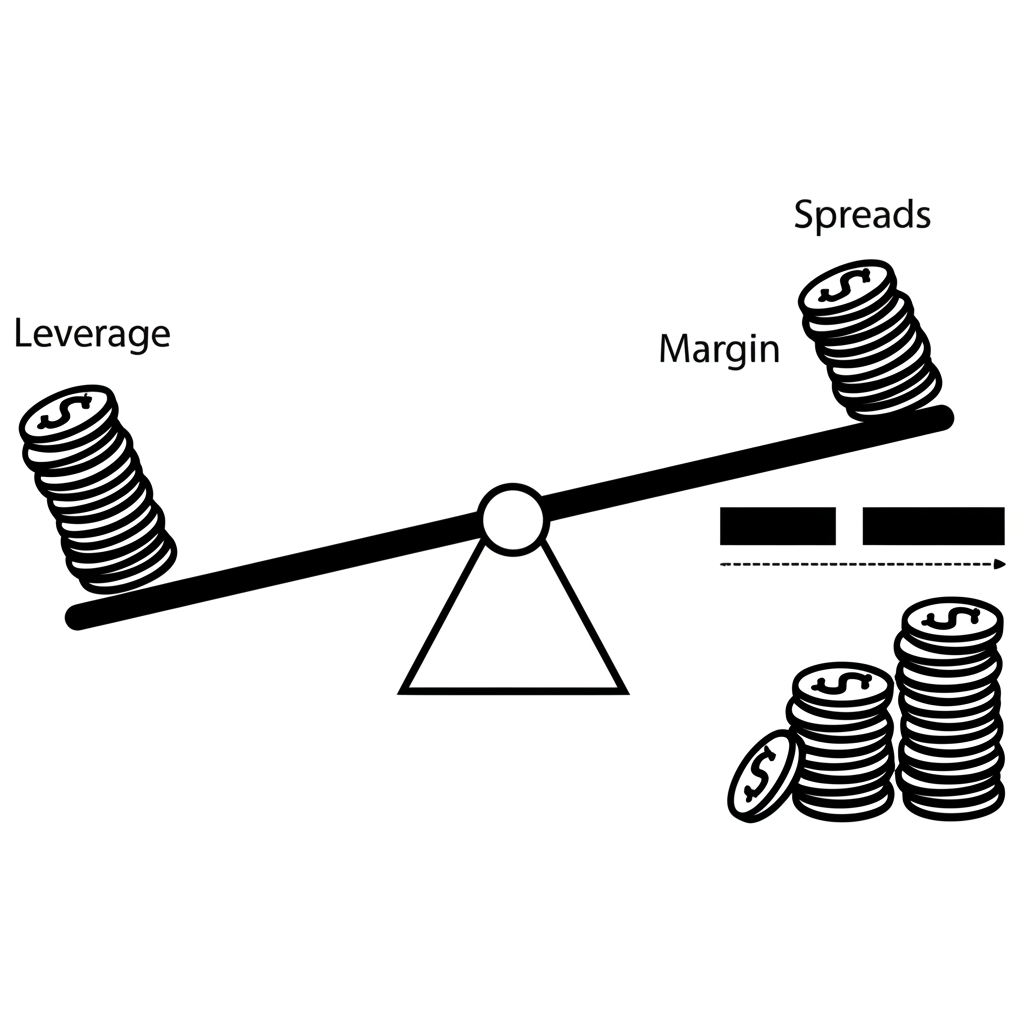Introduction to CFD Online Trading: What You Need to Know

Contracts for Difference, commonly known as CFDs, have become a widely discussed instrument in the world of digital trading. They offer traders the ability to speculate on price movements across global markets without actually owning the underlying assets. This flexibility has drawn significant interest, particularly among those seeking leveraged exposure to stocks, commodities, indices, and currencies. However, the same features that make CFDs appealing—especially high leverage and speculative nature—also contribute to their controversial reputation. A CFD is essentially a private agreement between a trader and a broker to exchange the difference in an asset’s price from the moment the contract opens to when it closes. While this allows for quick, capital-efficient trades, it also introduces substantial risk. This guide breaks down everything you need to understand about CFD trading, from how it works and its benefits to the serious risks involved, with a special focus on the regulatory environment in the United States and the legal alternatives available to American investors.
What is a CFD (Contract for Difference) and How Does it Work?
The Core Definition: CFD Explained

At its heart, a Contract for Difference (CFD) is a derivative product that enables traders to profit from price fluctuations without taking ownership of the actual asset. Whether it’s a share in Tesla, a barrel of crude oil, or the value of the S&P 500, you’re not buying or selling the real thing. Instead, you’re entering into a contract with a broker based on the price change of that asset. If you predict the price will go up and it does, you profit. If it goes down, you incur a loss. This structure makes CFDs fundamentally different from traditional investing, where ownership and long-term value are key. CFD trading is more about short-term speculation, market timing, and directional bets—making it popular among active traders.
Key Mechanics: Leverage, Margin, and Spreads

To fully grasp CFD trading, it’s essential to understand the core mechanics that drive both its potential rewards and risks.
Leverage is perhaps the most talked-about feature. It allows traders to control a large position with a relatively small amount of capital. For instance, with 1:30 leverage, a $1,000 deposit can open a $30,000 position. While this can significantly boost gains when the market moves in your favor, it can just as easily magnify losses when it moves against you. In volatile markets, even minor price shifts can wipe out a trading account—highlighting why leverage is often described as a double-edged sword.
Margin refers to the initial deposit required to open and maintain a leveraged position. It acts as collateral for the trade. There are two main types: initial margin, which is the upfront amount needed to enter a position, and maintenance margin, the minimum equity level required to keep the trade open. If losses reduce your account balance below this threshold, you may receive a margin call, requiring you to add more funds or risk having your position forcibly closed by the broker.
Spreads represent the cost of entering a trade. It’s the difference between the buy (ask) price and the sell (bid) price of an asset. Brokers typically earn revenue through spreads, so tighter spreads mean lower trading costs. This can have a significant impact on profitability, especially for high-frequency traders.
Another defining feature is the ability to go long or short. Going long means you buy a CFD because you expect the asset’s price to rise. Going short means you sell a CFD in anticipation of a price drop. This flexibility allows traders to profit in both rising and falling markets, making CFDs attractive in uncertain or bearish conditions.
Types of Assets Available for CFD Trading
CFDs provide access to a broad spectrum of financial markets, all from a single trading platform. This versatility is one of the reasons they’ve gained popularity worldwide. Traders can speculate on:
– Stocks: Individual company shares such as Apple, Amazon, or Microsoft.
– Indices: Market benchmarks like the NASDAQ 100, DAX 40, or Japan’s Nikkei 225.
– Commodities: Physical goods including gold, silver, oil, and agricultural products.
– Forex: Currency pairs like EUR/USD, USD/JPY, and GBP/AUD.
– Cryptocurrencies: Digital assets such as Bitcoin, Ethereum, and Solana, where permitted by regulation.
This wide-ranging access allows for portfolio diversification and the ability to react quickly to global economic events—though it also demands a solid understanding of each market’s unique dynamics.
Advantages and Disadvantages of CFD Online Trading
The Upsides: Why Traders Choose CFDs
Despite the risks, many traders are drawn to CFDs for several compelling reasons.
– High Leverage Potential: Leverage enables greater market exposure with minimal upfront capital, increasing the potential for outsized returns.
– Global Market Access: Traders can access international exchanges and asset classes without needing multiple accounts or dealing with foreign regulations.
– Short-Selling Capability: The ability to profit from falling prices adds strategic flexibility, particularly in downturns.
– Exemption from Certain Taxes: In jurisdictions like the UK, CFDs are not subject to stamp duty, reducing transaction costs compared to traditional stock purchases.
– Broad Instrument Selection: Many CFD brokers offer a wider range of tradable assets than standard brokerage platforms, including niche commodities and emerging market indices.
These features make CFDs a powerful tool for experienced traders who understand risk management and market analysis.
The Downsides: Understanding the Risks
However, the same attributes that offer opportunity also bring significant danger.
– High Leverage Risk: While leverage can multiply gains, it can also cause losses to surpass the initial investment. This is especially true in fast-moving or volatile markets.
– Market Volatility: Sudden news events or economic data releases can trigger sharp price swings, leading to rapid losses on leveraged positions.
– Counterparty Risk: Since CFDs are over-the-counter (OTC) instruments, traders rely on the financial stability and integrity of their broker. There’s no central clearinghouse to guarantee trades.
– Overnight Financing Costs: Holding positions overnight typically incurs a swap or rollover fee, which can accumulate and eat into profits over time.
– Regulatory Inconsistencies: CFD regulation varies widely by country. Some regions have strict rules, while others allow brokers to operate with minimal oversight, increasing the risk of fraud.
According to research by the European Securities and Markets Authority (ESMA), between 74% and 89% of retail investors lose money when trading CFDs. This stark statistic underscores the importance of caution, education, and disciplined risk management.
CFD Trading in the US: Legality, Restrictions, and Why It’s Different
Why Are CFDs Banned for Retail Traders in the United States?
The United States maintains one of the strictest regulatory stances on CFD trading globally. Unlike in Europe or Australia, where CFDs are widely available to retail investors, they are effectively banned for individual traders in the US. This prohibition is enforced by two major regulatory bodies: the Securities and Exchange Commission (SEC) and the Commodity Futures Trading Commission (CFTC).
The core reasons for the ban revolve around investor protection. CFDs are primarily over-the-counter derivatives, meaning they are not traded on centralized exchanges. This lack of transparency makes it difficult for regulators to monitor trading practices or ensure fair pricing. Additionally, the high leverage commonly offered on CFDs—sometimes as high as 1:500 in unregulated markets—is seen as excessively risky for average investors. US regulators prioritize market integrity and aim to prevent retail traders from being exposed to products that could lead to catastrophic losses.
Furthermore, because many CFD brokers operate offshore and outside the jurisdiction of US law, American investors would have little to no legal recourse in cases of fraud, misrepresentation, or broker insolvency. The absence of protections like SIPC insurance further increases the risk, leading regulators to conclude that the dangers outweigh the benefits for the general public.
What Happens if You Try to Trade CFDs from the US?
While some offshore brokers may accept US clients, doing so carries serious risks.
Engaging with unregulated or offshore CFD brokers can expose traders to legal gray areas. Although enforcement actions are typically directed at the brokers rather than individual traders, using such platforms means operating outside the safeguards provided by US financial regulations.
More importantly, there is no investor protection. If a broker becomes insolvent or refuses to process withdrawals, US authorities cannot intervene. Traders may also face difficulties in recovering funds or filing complaints, as these brokers are not subject to NFA or SEC oversight.
Additionally, many of these platforms use aggressive marketing tactics and offer misleading promises of high returns, further increasing the likelihood of financial harm. For these reasons, US residents are strongly advised to avoid CFD trading and instead explore the regulated alternatives available domestically.
Actionable Alternatives to CFD Trading for US Investors
For American investors seeking leveraged exposure or the ability to speculate on market movements, several legal and regulated options exist.
| Alternative | Similarities to CFDs | Key Differences | Considerations for US Traders |
|---|---|---|---|
| Futures Contracts | Leverage, long/short positions, speculation on price movements of underlying assets (commodities, indices, currencies). | Exchange-traded (centralized), standardized contracts, physical delivery possible (though rare for retail), regulated by CFTC. | Regulated, higher capital requirements for some contracts, defined expiry dates. |
| Options Trading | Leverage, ability to go long/short (calls/puts), speculation on price direction. | Defined risk (premium paid), time decay (expiry dates), more complex strategies possible. | Regulated by SEC, versatile for various market views, requires understanding of Greeks and expiry mechanics. |
| Leveraged ETFs | Amplify returns based on underlying index/asset movement. | Exchange-traded funds, no margin calls (unless buying on margin), designed for short-term holding due to compounding decay. | Regulated by SEC, suitable for short-term tactical plays, not ideal for long-term holding. |
| Forex Trading | Leverage, speculation on currency pair movements, available 24/5. | Regulated by NFA/CFTC in the US, direct currency exchange, typically lower leverage limits for retail (e.g., 1:50). | Must use NFA/CFTC regulated brokers, high liquidity, specific market dynamics. |
| Spread Betting | Tax-efficient (in UK/Ireland), speculation on price movements, ability to go long/short, no asset ownership. | Tax treatment specific to UK/Ireland, distinct from CFDs in legal structure, essentially a wager on price. | Not available in the US. Mentioned for context as a common alternative in other regions. |
Futures Contracts
Futures are standardized agreements to buy or sell an asset at a predetermined price on a future date. Traded on regulated exchanges like the CME Group, they offer leverage and the ability to go long or short—similar to CFDs. However, because they are exchange-cleared and subject to CFTC oversight, they provide greater transparency and security. While some futures contracts require physical delivery, most retail traders close positions before expiration, making them purely financial instruments.
Options Trading
Options give the buyer the right—but not the obligation—to buy (call) or sell (put) an asset at a set price before a specific date. They offer leverage and defined risk, especially for buyers, whose maximum loss is limited to the premium paid. Options are traded on regulated exchanges and fall under SEC jurisdiction, making them a safer alternative for speculative strategies. Advanced traders also use options for hedging, income generation, and volatility plays.
Leveraged ETFs
Leveraged ETFs use derivatives and borrowing to deliver multiples of a benchmark’s daily performance—such as 2x or 3x the S&P 500. While they offer amplified exposure without margin trading, their returns reset daily, leading to compounding effects that can distort long-term performance. As a result, they are best suited for short-term trading rather than buy-and-hold investing.
Forex Trading
The foreign exchange market allows traders to speculate on currency pair movements. In the US, forex trading is legal and regulated by the NFA and CFTC. Leverage is available but capped—usually at 1:50 for major pairs—to limit excessive risk. The market operates 24 hours a day, five days a week, and offers high liquidity, making it accessible and responsive to global news.
Spread Betting (UK/Ireland Specific, but mention for context)
Though not available in the US, spread betting is a popular alternative in the UK and Ireland. Like CFDs, it allows speculation on price movements without owning the asset. However, it’s structured as a bet, which in certain jurisdictions leads to tax-free profits. This legal distinction makes it appealing in those markets but irrelevant to US investors.
How to Trade CFDs Online (for non-US audience or for understanding purposes)
For traders outside the United States where CFDs are permitted, entering the market involves several key steps.
Choosing a Reputable CFD Broker
The foundation of successful CFD trading is selecting a trustworthy broker. Key factors to consider include:
– Regulatory Status: Look for brokers regulated by recognized authorities such as the UK’s Financial Conduct Authority (FCA), Australia’s ASIC, or Cyprus’ CySEC. Regulatory oversight ensures compliance with capital requirements and client fund segregation.
– Trading Platform: Assess the platform’s usability, charting tools, order execution speed, and mobile app functionality.
– Pricing Structure: Compare spreads, commissions, overnight financing rates, and withdrawal fees. Lower costs can significantly improve net returns.
– Customer Service: Responsive support is crucial, especially when technical issues arise or positions need urgent attention.
– Asset Availability: Confirm that the broker offers access to the markets you want to trade—whether it’s tech stocks, energy commodities, or forex pairs.
Avoid brokers that operate without clear regulation or make unrealistic profit claims.
Opening and Funding Your Trading Account
Once a broker is selected, opening an account involves completing a Know Your Customer (KYC) process. This typically requires submitting government-issued ID and proof of address to comply with anti-money laundering regulations. After verification, you can fund your account via bank transfer, credit card, or e-wallets like PayPal or Skrill. It’s wise to start with a modest deposit until you’re comfortable with the platform and trading strategy.
Placing Your First CFD Trade: A Step-by-Step Example
Let’s walk through a practical example for a trader in Europe looking to speculate on oil prices:
1. Select the Asset: You choose to trade WTI Crude Oil.
2. Market Analysis: Based on supply concerns and geopolitical tensions, you anticipate a price increase.
3. Determine Position Size: Oil is trading at $80 per barrel. You decide to buy 100 CFD units with 1:20 leverage. The total exposure is $8,000, requiring a margin of $400.
4. Set Risk Controls: You place a stop-loss at $79.50 to limit downside and a take-profit at $81.50 to lock in gains.
5. Execute the Trade: You open a “buy” position for 100 oil CFDs.
6. Monitor the Trade: You track price action and market news.
7. Close the Trade:
– If the price reaches $81.50, your take-profit triggers, earning you $150 before fees.
– If it drops to $79.50, the stop-loss activates, limiting your loss to $50 plus the spread.
This example illustrates how leverage and risk management tools work together in real trading scenarios.
Essential CFD Online Trading Strategies for Beginners
New traders should focus on mastering foundational strategies before advancing to complex techniques.
Trend Following
This approach involves identifying and trading in the direction of established market trends. Traders use tools like moving averages, trendlines, and momentum indicators to confirm the trend’s strength. For example, if the price of a stock CFD is making consistently higher highs and higher lows, a trend follower would look to enter long positions on pullbacks.
Scalping
Scalping aims to capture tiny price movements over very short intervals—sometimes just seconds. Scalpers rely on tight spreads, high liquidity, and rapid execution. It demands intense focus and discipline, as well as a reliable internet connection and a responsive trading platform.
Day Trading
Day traders open and close all positions within a single session. This avoids overnight financing costs and exposure to after-hours market gaps. They typically use technical analysis, volume patterns, and news catalysts to identify intraday opportunities.
Swing Trading
Swing trading targets medium-term price movements that unfold over several days or weeks. Traders analyze chart patterns, support and resistance levels, and economic indicators to anticipate turning points. This style suits those who can’t monitor the market constantly but still want to capitalize on directional moves.
Mastering Risk Management in Online Trading
Given the high-risk nature of leveraged trading, risk management is not optional—it’s a necessity.
Stop-Loss and Take-Profit Orders
Stop-loss orders automatically close a trade when the price hits a predetermined level, limiting potential losses. Take-profit orders do the same when a profit target is reached. These tools help remove emotion from trading and enforce discipline, especially during volatile conditions.
Position Sizing
This refers to how much capital you allocate to a single trade. A common rule is to risk no more than 1-2% of your total account balance per trade. For example, with a $10,000 account, you’d limit your loss to $100 on any one trade. Proper sizing helps preserve capital during losing streaks and allows for long-term survival in the markets.
Diversification (where applicable for a portfolio of leveraged products)
While CFD trading often focuses on single assets, diversifying across different markets—such as stocks, commodities, and currencies—can reduce overall portfolio risk. This helps prevent a single adverse event from wiping out your account.
Never Risk More Than You Can Afford to Lose
This principle applies to all forms of trading but is especially critical with leveraged instruments. Only use funds that you can afford to lose entirely. The markets are inherently unpredictable, and even well-reasoned trades can fail due to unforeseen events.
Conclusion: Is CFD Online Trading Right For You?
CFD trading offers a dynamic way to engage with global financial markets, providing leverage, flexibility, and access to a wide array of assets. For experienced traders with strong risk management skills, it can be a powerful tool. However, the risks are substantial—especially for beginners. The potential to lose more than your initial deposit is real and should not be taken lightly.
For US residents, the path is clear: CFDs are off-limits for retail investors. This restriction exists to protect individuals from high-risk, unregulated products. Fortunately, the US financial system offers robust alternatives—futures, options, leveraged ETFs, and regulated forex trading—that deliver similar benefits within a secure, transparent framework.
Regardless of where you live, education is the first step. Use demo accounts to practice, study market behavior, and develop a trading plan. Only after thorough preparation should you consider using real money. Always remember: in trading, survival comes before success. Protect your capital, manage your risks, and never bet more than you can afford to lose.
Frequently Asked Questions About CFD Online Trading
What is CFD Full form in trading?
CFD stands for **Contract for Difference**. It is a financial derivative that allows traders to speculate on the price movements of underlying assets without owning them.
Why is CFD illegal in the US for retail investors?
CFDs are illegal for retail investors in the US primarily due to concerns about high leverage risk, lack of regulatory oversight compared to exchange-traded products, and insufficient investor protection under US law. The SEC and CFTC enforce these regulations.
Is CFD trading available in the USA for any type of investor?
No, CFD trading is generally not available for retail investors in the USA. While institutional investors or professional traders may access similar instruments through specific regulatory frameworks, CFDs are explicitly prohibited for the general public.
What are the best alternatives to CFD trading for US residents?
For US residents, regulated alternatives that offer similar leverage and speculative opportunities include:
- **Futures Contracts**
- **Options Trading**
- **Leveraged ETFs**
- **Forex Trading** (through NFA/CFTC regulated brokers)
How does leverage impact my profits and losses in CFD trading?
Leverage amplifies both potential profits and potential losses. A small price movement in your favor can result in a significant profit relative to your initial capital, but an equally small movement against you can lead to substantial losses, potentially exceeding your initial deposit.
What should I look for when choosing a CFD trading platform?
When choosing a CFD platform (for non-US traders), prioritize regulatory compliance, competitive spreads and fees, user-friendly platform features, strong customer support, and the range of assets available for trading.
Can I trade CFDs on cryptocurrencies?
Yes, many CFD brokers offer CFDs on cryptocurrencies like Bitcoin and Ethereum. However, the availability and specific regulations for crypto CFDs vary significantly by jurisdiction, and they often come with higher volatility and risk.
What are the main risks associated with CFD online trading?
The main risks include:
- **High leverage** leading to magnified losses.
- **Market volatility** causing rapid price swings.
- **Overnight funding costs** for positions held open.
- **Counterparty risk** with the broker.
- The potential to **lose more than your initial deposit**.
What is the difference between CFD trading and spread betting?
Both allow speculation on price movements without asset ownership. The key difference lies in their legal and tax treatment, primarily in the UK and Ireland. Spread betting is considered a form of gambling and is often tax-free on profits in those regions, while CFD profits are typically subject to capital gains tax.
How do I start CFD trading for beginners (outside the US)?
For beginners outside the US, start by:
- Educating yourself thoroughly.
- Choosing a reputable, regulated CFD broker.
- Opening a demo account to practice without real money.
- Understanding leverage, margin, and risk management.
- Starting with small amounts of capital you can afford to lose.

留言